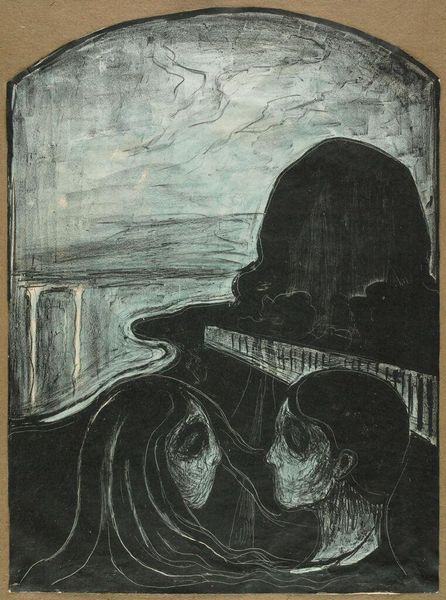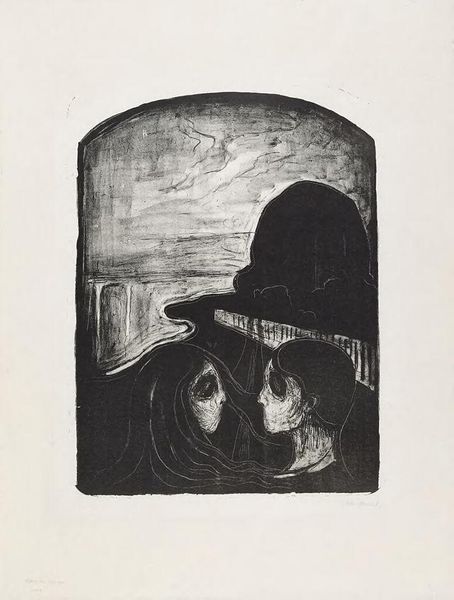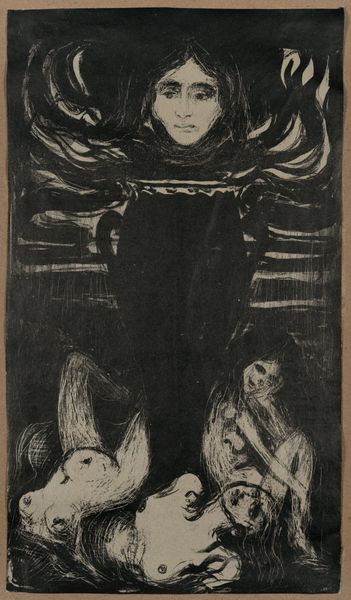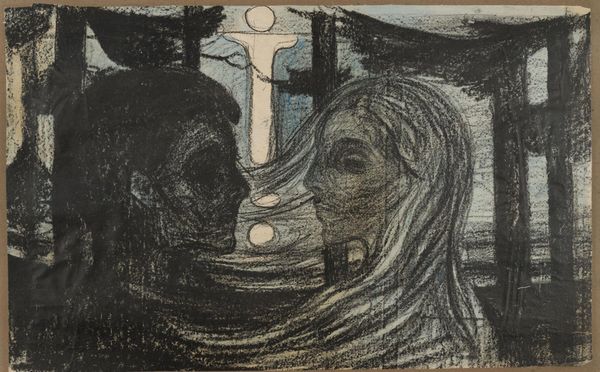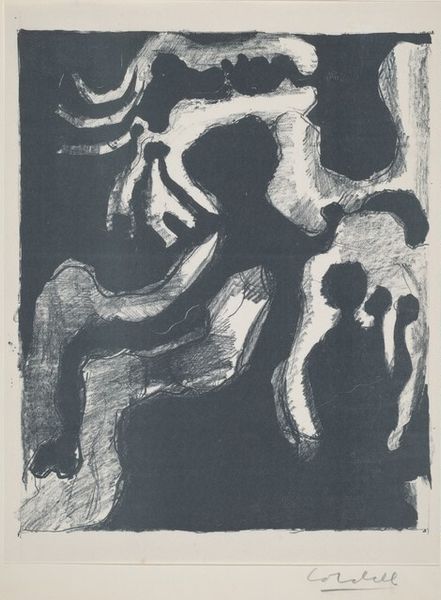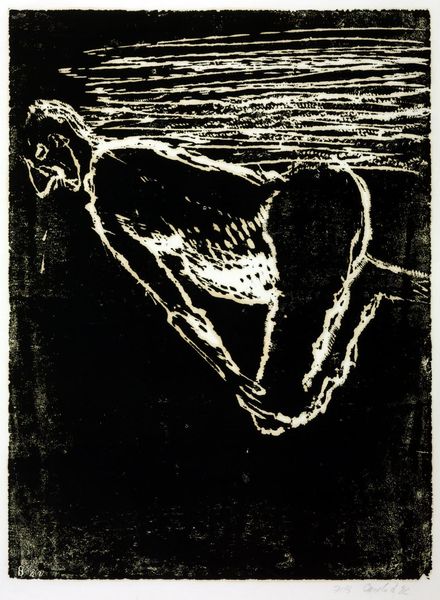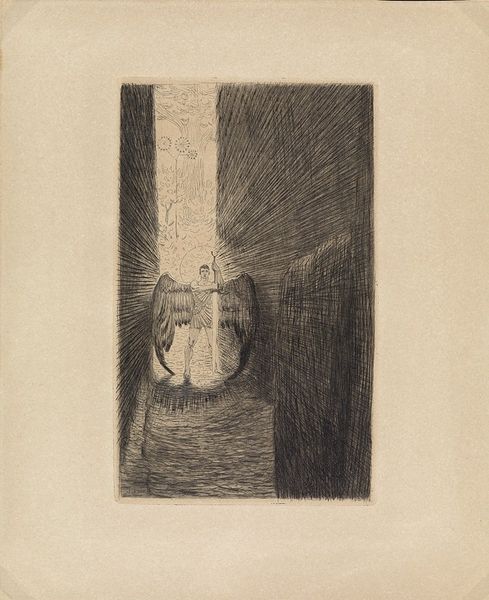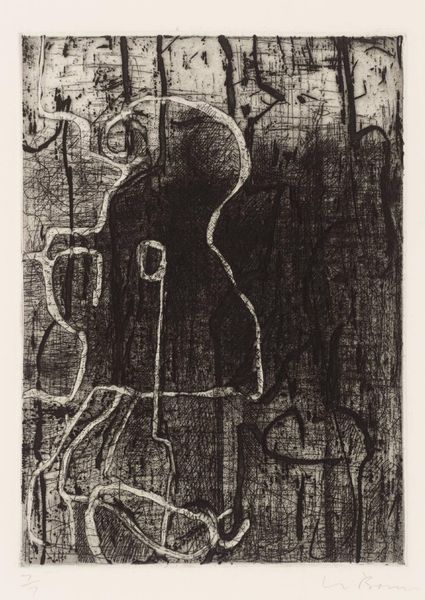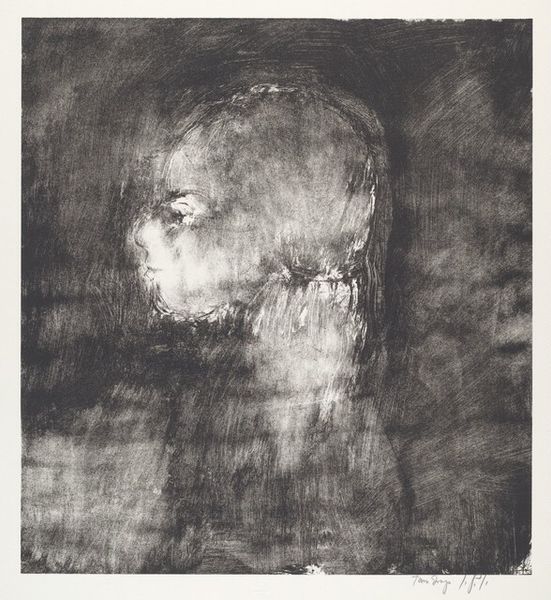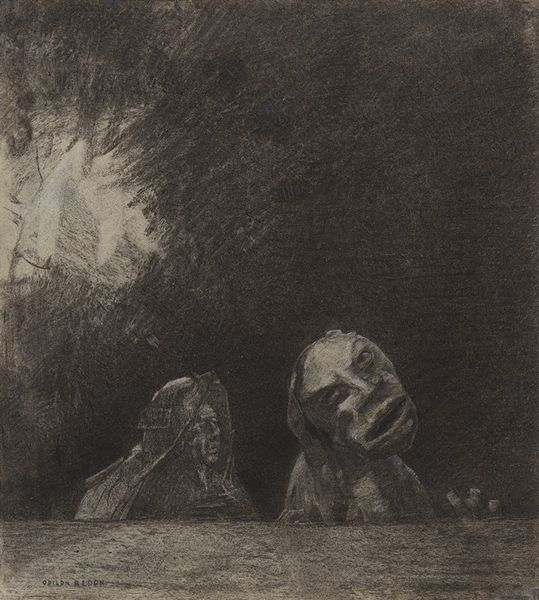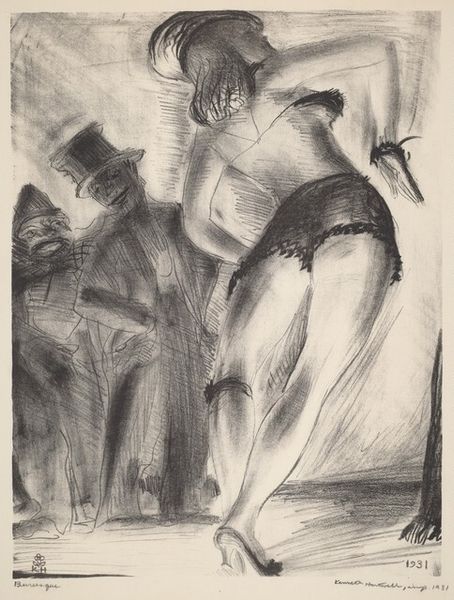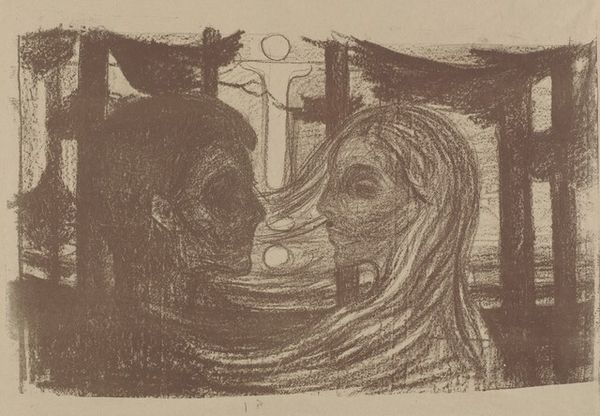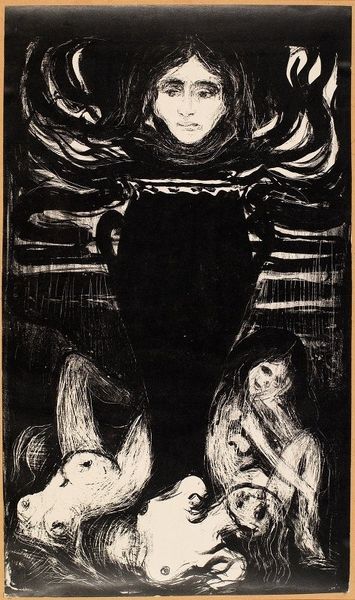
Copyright: Public Domain: Artvee
Editor: This is "Attraction I", an etching and print by Edvard Munch, created in 1995. The dark, shadowy figures give it a very intense, almost gothic mood. What do you see in this piece beyond that initial feeling? Curator: This etching, created long after Munch's most famous paintings, invites us to consider attraction not just as a romantic ideal, but also as a potentially consuming, even destructive force, especially when framed within the societal expectations and restrictions placed on women. Look at the setting; it is not idyllic, but rather feels claustrophobic. Does it evoke a sense of unease for you, in the way it hints at the power dynamics within relationships and their impact on female identity? Editor: It definitely does. I initially saw it as just somber, but considering the positioning and almost spectral look of the figures, especially against the rigid lines behind them, I get what you mean about societal restrictions. Is that bridge a deliberate symbol? Curator: I think it's vital. That rigid structure looms over them, almost barring their way. And how do you interpret the turbulent sky? Consider how the lack of precise detail might highlight emotional chaos rather than serene naturalism, reflecting anxieties of modern life, especially for women navigating the complexities of early 20th-century society. Editor: That makes sense; it shifts the reading completely. It’s not just a portrait; it is social commentary. Curator: Precisely. Munch is making visible the often-unseen structures of power and control. Seeing it as just a portrait overlooks the broader questions he raises about autonomy and societal constraints. It also seems important to remember the context within his life as well. Editor: I will definitely remember that the next time I look at his work. Thanks so much! Curator: My pleasure. Looking at art through the lens of history really changes the dialogue!
Comments
No comments
Be the first to comment and join the conversation on the ultimate creative platform.
